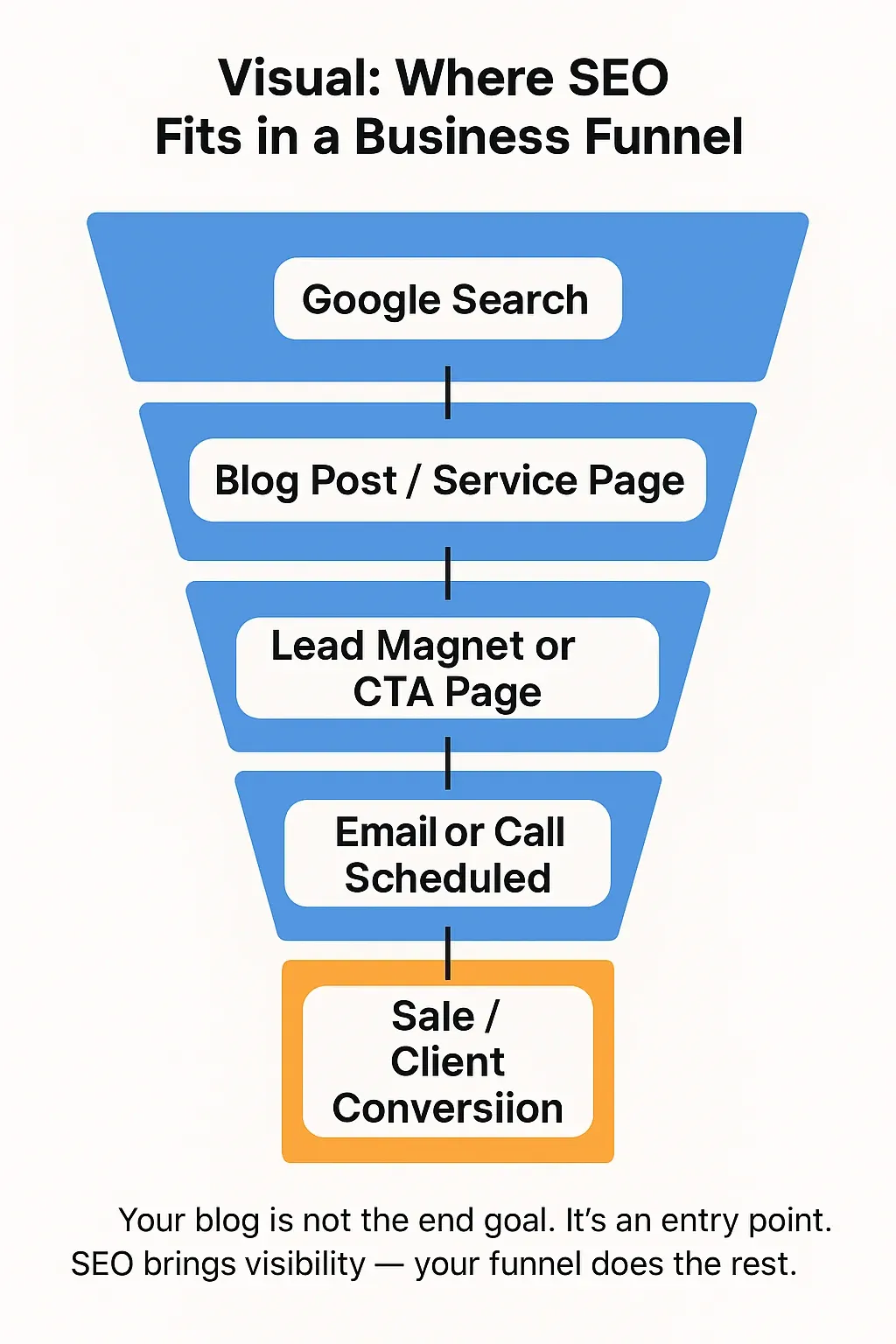In 2025, SEO is less about trends and more about structure. If you’re a business owner, you don’t need to memorize jargon like “E-E-A-T,” “semantic indexing,” or “zero-click snippets.” What you need is simple: a site that gets seen by the right people, at the right time, and turns visitors into leads or buyers.
This guide skips the fluff. Here’s what actually works — and how to build it into your business without hiring a full-time SEO team.
What Is SEO — Practically Speaking?
Search Engine Optimization (SEO) is the process of making your website easier to find, understand, and trust — for both people and search engines.
SEO is not magic. It’s infrastructure.
- Technical: Your site is crawlable, mobile-friendly, and fast
- Content: You answer the right questions with useful, structured content
- Links: Other sites mention or link to your site as a credible source
- Experience: Visitors stay, explore, and convert — because your site is actually helpful
No tricks. Just alignment.
What Business Owners Actually Need from SEO
| Need | SEO Outcome | Priority |
|---|---|---|
| Be found by new customers | Search visibility for relevant queries | Critical |
| Build trust and authority | Clear, well-written content and structured pages | High |
| Compete locally or in a niche | Local SEO + long-tail keyword strategy | Critical |
| Scale content without waste | Content plan based on real demand and intent | High |
| Measure what matters | Analytics tied to conversions, not just visits | Essential |
You don’t need 100 blog posts. You need 10 pages that actually bring leads.
The 5-Part SEO Setup for Real Businesses
1. Start with Site Health
- Ensure HTTPS is active
- Load speed under 2 seconds
- Mobile-friendly layout
- Clean URL structure (yourdomain.com/service-name)
- Fix broken links, duplicate content, and 404 errors
Tool tip: Use Google Search Console and PageSpeed Insights — both free.
2. Write for Search Intent, Not Keywords
Google doesn’t rank keywords. It ranks answers.
- Use plain language: “best CRM for dentists” > “enterprise SaaS CRM stack”
- Prioritize pages like:
- Product/service overviews
- Comparison pages (vs. competitors)
- FAQs and how-to guides
- Add FAQ schema to show rich results in Google
Pro tip: Search your main offer in Google — look at “People Also Ask”. Answer those.
3. Optimize Pages That Matter
Focus on core pages first:
- Homepage
- Service/product pages
- Lead magnet or booking pages
Each page should:
- Have a unique H1 and meta title
- Use one primary keyword naturally
- Include internal links to other key pages
- Load fast, look good, and be skimmable
4. Local SEO (If You Serve a Location)
- Set up and verify Google Business Profile
- Add your business to 15-30 trusted directories
- Embed a Google Map on your contact page
- Use your city/region in H1s and title tags
Review Strategy:
- Ask happy clients to leave reviews on Google
- Reply to all reviews — short, positive, and human
5. Track What Converts (Not Just What Ranks)
You don’t need 10,000 visits. You need 10 buyers.
- Set up goals in Google Analytics (calls, form submissions, bookings)
- Track organic search traffic separately from other channels
- Use UTM links to test blog post or CTA performance
- Update content that underperforms — don’t just add more

Your blog is not the end goal. It’s an entry point. SEO brings visibility — your funnel does the rest.
Bonus: 5 SEO Myths Business Owners Should Ignore
| Myth | Reality |
|---|---|
| More content = better SEO | Only if it’s relevant, structured, and optimized |
| SEO is one-time setup | It’s ongoing maintenance + strategic updates |
| You need to rank #1 to get leads | Position #2-5 often convert better if they match intent |
| Only big sites can win | Niche and local sites rank with focused content |
| AI content alone can replace strategy | Without structure and intent, AI content fails |
Final Word
SEO in 2025 is not about buzzwords or hacks. It’s about clarity, consistency, and connection.
If your site:
- Loads slowly
- Has vague or outdated pages
- Doesn’t answer specific user questions
- Or hides your value behind bad UX
…then no amount of SEO “tactics” will help.
Want a site that quietly outranks competitors and brings real leads? Start with the basics. Structure, content, trust — and a clear reason for people to stick around.
Need help? At 3MY, we build SEO strategies that make sense — even if you’re not an SEO person.










